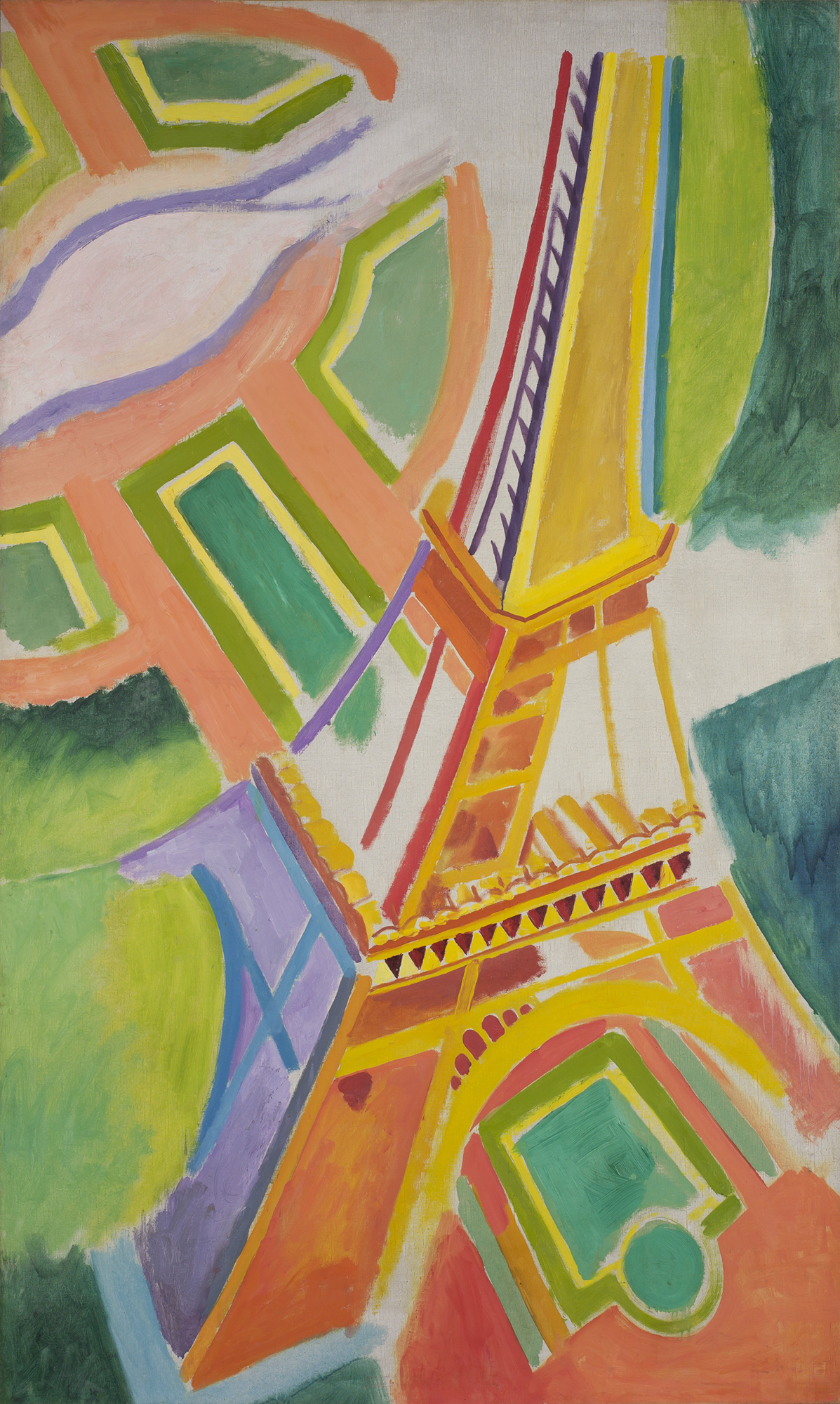Roaring: Art, Fashion, and the Automobile in France, 1918–1939
Saint Louis Art Museum
April 12–July 27, 2025
It comes as no surprise to read in the most recent bulletin of the Saint Louis Art Museum that the museum’s spectacular exhibition Roaring: Art, Fashion, and the Automobile in France, 1918–1939, on view until July 27, is one of its most popular in years. To begin with, the materials on display are objectively marvelous and displayed to optimal effect, and there is no dearth of visual intrigue from start to finish. Those with the interest and patience to invest themselves in the didactics will be rewarded with a well-spun, accessible narrative that ties the seemingly disparate threads of early twentieth-century French fashion and automobile design together in such a way that not only incorporates a wide spectrum of media, but also contextualizes these intermedial connections within a broader sociocultural development. And lastly, for those whose attentions are drawn to exhibition design, Roaring curator Genevieve Cortinovis provides a masterclass in the spatial and visual negotiation of such a wide array of objects, assembling a successful balance of automobile, fashion, and art despite the challenge of scale.
With expectations of movements like Cubism, Futurism, and De Stijl, whose geometric abstractions celebrated the Industrial Age, a welcome introduction comes in the form of an unexpected but delightful 1917 painting by, of all people, Henri Matisse, whose pastoral visions hardly come to mind when one thinks of the machine aesthetic. In the painting, we are greeted with an extraordinary view from the front seat of Matisse’s 1911 Renault 6 CV, from which the car’s windshield frames the landscape in such a way that heralds a new perspective that is remarkably innovative and defiant of the traditional position of the viewer. This “automotive eye” is a perfect threshold for what one is to encounter in Roaring, a multimedia feast incorporating fashion and textile, decorative and fine art, photography, film, architectural design, book arts, and, of course, those fabulous automobiles.
Clever dialogues abound throughout the exhibition, such as the apposition of the Alfa Romeo logo and one of Mondrian’s iconic grid compositions, or the way in which the chevrons in the Citroën logo are juxtaposed with a highly graphic cocoon coat from the late 1920s from the Missouri Historical Society (as an aside, it was a pleasure to see throughout the exhibition the abundance of materials sourced from local and midwestern collections, no doubt to the delight of the private collectors and institutions who are getting the opportunity to show off their respective treasures). A poster for Voisin by the brilliant draughtsman Charles Loupot, with its masterful use of negative space, more than holds its own in a room with a classic Mondrian and a sizable Georges Braque still life. Nearby, a vitrine of mascots (hood ornaments to laypeople like me) represent flight in various degrees of abstraction, some of which could understandably be confused for maquettes or Boccioni sculptures. These items are among the most evocative statements representing the personalization of the automobile as a signifier of modernity in three-dimensional form—a collision of Futurist utopianism and corporate identity.
The exhibition is divided into six thematic sections that largely eschew chronology, as the intra-sectional relationships are so engrossing that they tend to alleviate the urgency of a sense of sequential flow. Case in point, a c. 1927 dress by Suzanne Talbot, with gold bands inspired by the then-recently discovered funerary mask of Tutankhamun, is linked with design elements in a wood-bodied Skiff Torpedo seen earlier, inducing one to double back and get reacquainted with the vehicle. In fact, it is not uncommon in this exhibition to see visitors traversing the galleries in ricochet-like patterns rather than the typical unidirectional stream. It may be this aspect of the exhibition that is most rewarding—the unexpected interactions across time and media that remind us how voracious culture can be in consuming the past, but also how ingenious it can be in reinterpreting it.
